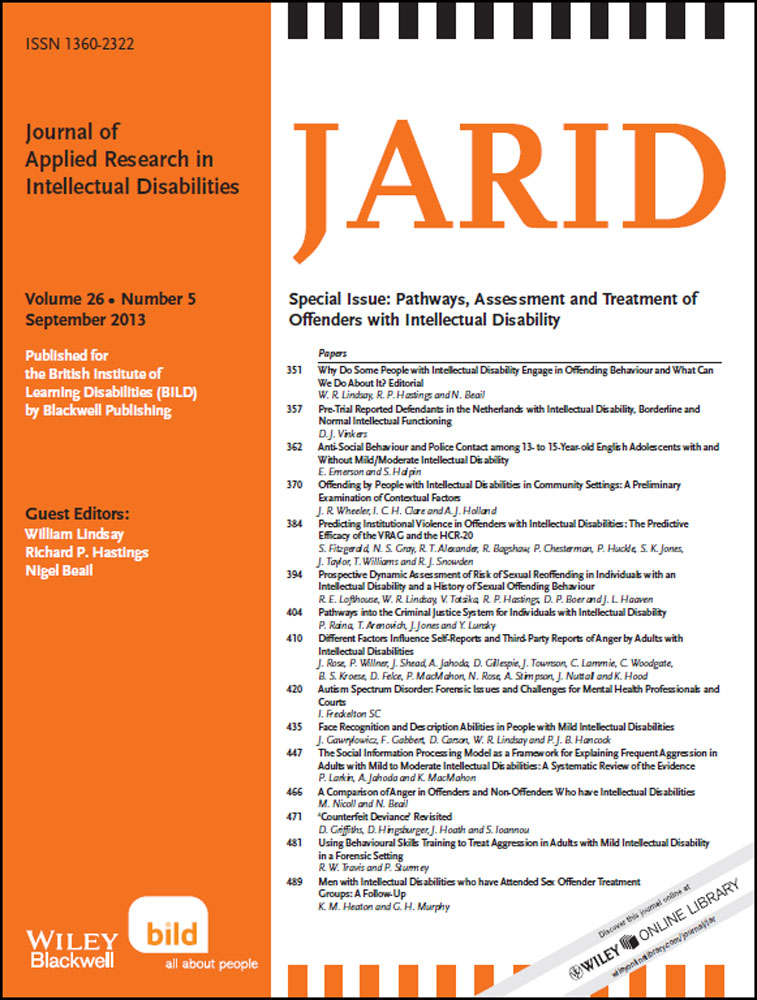Pathways into the Criminal Justice System for Individuals with Intellectual Disability
Abstract
Background
Studies focusing on pathways in the criminal justice system for individuals with intellectual disability are limited in that they only study individuals once they are involved in the system and do not consider the pathways into it. The purpose of this study is to examine predisposing factors that lead to various outcomes for individuals with intellectual disability when police are called to respond to their behavioural crises.
Method
The current study examined the outcome of police response to 138 individuals with intellectual disability in crisis. Following police intervention, 15 individuals were arrested, 76 were taken to the emergency department and 47 received on-scene resolution. Comparisons between the three groups were conducted.
Results
The three groups differed in terms of residence at the time of crisis, history of forensic involvement and type of crisis. Police intervention with adults with intellectual disability can happen for different reasons. Both individual and situational predictors explained this outcome.




